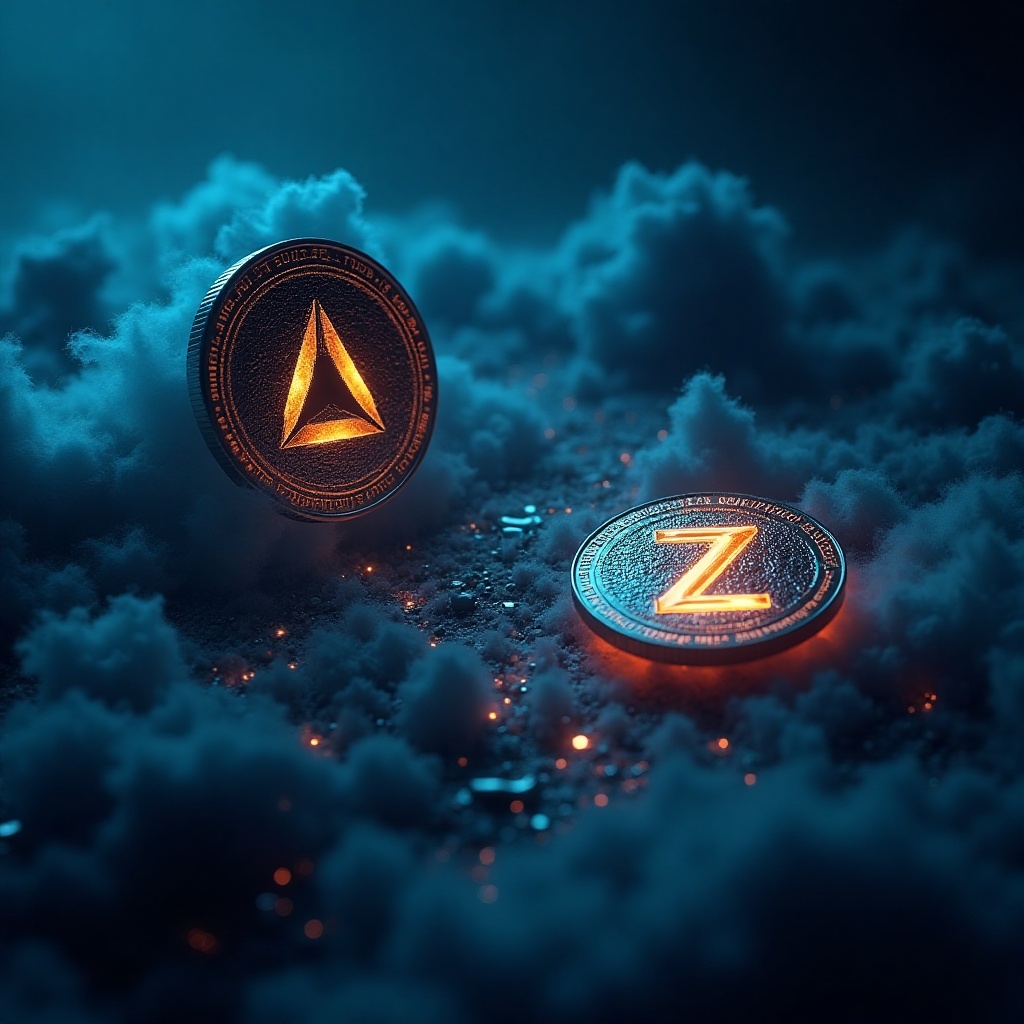Decentralized Autonomous Organizations, or DAOs, represent one of the most exciting developments in blockchain technology. Unlike traditional organizations, DAOs are governed collectively by their members, typically through voting rights tied to ownership of tokens. This system promises a future where power isn’t held by a select few but is distributed among the community — a truly democratic, decentralized model.
Yet, for all their promise, DAOs face a significant challenge: many members don’t actively participate in governance. Voting turnout in most DAOs remains surprisingly low, despite the fact that the decisions made during governance directly impact the direction and success of the entire project. This lack of participation, commonly referred to as “voter apathy,” threatens the core principle of decentralization. When only a small fraction of token holders vote, power effectively consolidates in the hands of a few, undermining the democratic ideals DAOs aspire to uphold.
Voter apathy isn’t just a minor inconvenience — it has serious consequences. It can slow down decision-making, leave important proposals unaddressed, and open the door for bad actors to exploit governance weaknesses. Simply put, a DAO with disengaged members isn’t truly decentralized — it’s vulnerable.
In this article, I want to explore the issue of voter apathy in DAOs and, more importantly, how carefully designed incentive structures can encourage broader, more meaningful participation in governance. Whether you’re an active DAO member, a curious community participant, a developer building DAO infrastructure, or an entrepreneur launching a DAO project, understanding these dynamics is critical. Together, we’ll uncover why members hesitate to vote, the different kinds of incentives that can change behavior, and how technology and governance design choices impact engagement.
If DAOs are to fulfill their revolutionary promise, we need to solve the puzzle of voter apathy — not just by identifying the problem but by implementing smart, fair, and effective incentive mechanisms that make governance participation rewarding for everyone involved. Let’s dive in.
Understanding Voter Apathy in DAOs
To effectively address voter apathy in DAOs, we first need to understand what it really means and why it happens. In simple terms, voter apathy is when eligible members of a DAO choose not to participate in governance votes. It’s more than just skipping a single vote — it’s a persistent disengagement pattern that undermines collective decision-making.
What Causes Voter Apathy in DAOs?
Perceived Lack of Impact
Many DAO members feel their vote won’t make a difference. When token holdings are unevenly distributed, large holders dominate outcomes, leaving smaller holders thinking, “Why bother? My one vote won’t sway anything.” This perception discourages active involvement and creates a self-fulfilling cycle where low turnout reinforces power concentration.
Complexity of Proposals
DAO proposals can be highly technical, dense, and lengthy. Many members do not have the time or expertise to fully understand the implications of every proposal. This complexity creates a barrier to participation — if you don’t feel equipped to make an informed decision, it’s easier to abstain.
Inconvenient Voting Processes
The voting process itself can be cumbersome. On-chain voting often requires interacting with wallets, paying gas fees, or navigating unfamiliar interfaces. For many, the technical friction involved discourages participation, especially for smaller token holders who don’t want to spend money or time just to vote.
Low Token Holdings
Token distribution often skews heavily, with a minority holding most tokens. This leads to disenfranchisement feelings among smaller holders who believe their votes carry little weight. Without a sense of meaningful influence, motivation to vote diminishes.
Governance Fatigue
Some DAOs hold frequent votes on numerous proposals. While regular governance is good in theory, in practice it can overwhelm members. Constant voting requests can lead to fatigue — members start ignoring proposals simply because there are too many to follow and evaluate regularly.
Why Does Voter Apathy Matter?
Centralization of Power
When only a small group of active voters participate, governance power concentrates among a few large holders or dedicated insiders. This defeats the DAO’s goal of decentralization and can lead to decisions that benefit a minority rather than the whole community.
Reduced Legitimacy and Engagement
Low turnout can cast doubt on the legitimacy of decisions. If most members don’t vote, it becomes harder to claim that governance truly reflects the community’s will. This erodes trust and discourages broader engagement.
Increased Security Risks
DAOs with low participation become vulnerable to governance attacks, where malicious actors accumulate enough voting power to push harmful proposals. Without wide member involvement, the community’s collective defense weakens.
Understanding these root causes and consequences is the first step in designing effective incentive structures. Only by acknowledging why members disengage can we create governance environments that encourage active and meaningful participation.
Designing Effective Incentive Structures
Addressing voter apathy requires more than just awareness — it demands deliberate design of incentive structures that encourage meaningful participation. Incentives serve as motivators, nudging DAO members to engage in governance activities consistently and thoughtfully. However, crafting these incentives requires a delicate balance: they must reward participation without encouraging manipulation or shallow engagement.
Types of Incentives to Boost Governance Participation
Financial Incentives
These are the most straightforward and often the most immediately motivating. Financial incentives can include staking rewards, token distributions, or yield farming opportunities tied directly to voting activity. For example, a DAO might allocate a portion of its treasury to reward voters proportional to their participation or influence. This provides a clear, tangible benefit for engaging.
However, financial incentives alone have pitfalls. They can attract “vote sellers” who participate solely to earn rewards, not because they care about the project’s future. Also, without safeguards, wealthy token holders might game the system, undermining fairness.
Reputation-Based Incentives
Reputation systems reward members with non-transferable status tokens, badges, or scores that recognize their contribution to governance. Reputation can translate into social capital, increased influence, or eligibility for leadership roles within the DAO.
Unlike financial rewards, reputation is earned over time and encourages sustained, meaningful participation. It also creates a sense of pride and belonging, motivating members to stay engaged beyond immediate monetary gains.
Access-Based Incentives
Access incentives grant members exclusive rights or privileges in exchange for active governance participation. This could mean early access to new features, voting on premium proposals, or participation in special committees. By linking governance activity to tangible perks, members feel their involvement unlocks additional value within the ecosystem.
Recognition-Based Incentives
Simple but powerful, public acknowledgment through leaderboards, spotlight features, or community shoutouts can boost motivation. Recognition feeds intrinsic desires for social validation and belonging, making members feel valued and integral to the DAO’s success.
Best Practices for Incentive Design
Align Incentives with Meaningful Participation
Incentives should reward not just any activity, but actions that genuinely improve governance quality. For instance, rewarding informed voting or constructive proposal discussions prevents gaming and encourages responsibility.
Transparency and Clarity
DAO members must understand exactly how incentives are earned and distributed. Transparent rules build trust and reduce skepticism about fairness.
Simplicity and Ease of Use
Complicated reward systems can backfire. Keeping incentive mechanisms simple and easy to engage with lowers barriers for members to participate.
Inclusivity
Ensure incentives don’t exclude smaller token holders. Design mechanisms that encourage broad-based participation rather than only rewarding whales.
Real-World Examples
Uniswap’s Governance Model
Uniswap’s token holders can vote on proposals that directly affect protocol upgrades and treasury management. While it doesn’t heavily rely on financial incentives for voting, it encourages participation through the value proposition of having a say in a leading DeFi protocol’s future.
Compound’s Governance Attack
The Compound DAO faced a governance exploit because voter apathy allowed a malicious actor to push a harmful proposal with minimal opposition. This incident underlined the necessity of incentives that both encourage turnout and ensure voters are informed.
By thoughtfully designing incentive structures, DAOs can turn voter apathy into active engagement, safeguarding decentralization and empowering the community. Next, we’ll explore how delegated voting systems can complement these incentives to further boost participation.
Implementing Delegated Voting Systems
How Delegated Voting Works
Delegated voting, often called liquid democracy, offers an innovative way to combat voter apathy by allowing token holders to entrust their voting power to trusted representatives, or delegates. This approach recognizes that not all members have the time, interest, or expertise to vote on every proposal but still want their voice to count indirectly.
In a delegated voting system, each token holder can choose to either vote directly on proposals or delegate their voting power to someone they trust — often a more knowledgeable or active community member. The delegate then casts votes on behalf of their supporters. Importantly, delegation is usually flexible and can be revoked or changed at any time, giving token holders control over who represents them.
Benefits of Delegated Voting
Increased Participation Through Proxy
Delegation lowers the barrier for less engaged members, enabling them to participate indirectly. This expands effective voter turnout because even passive holders’ votes influence outcomes via delegates.
Expertise Utilization
Delegates tend to be more informed or active community members who understand complex proposals better. This can lead to higher quality decisions as votes are cast by knowledgeable participants.
Efficiency in Governance
By consolidating voting power among fewer, engaged individuals, proposals can be decided faster, reducing governance fatigue from excessive voting demands on the entire community.
Challenges and Risks
Potential Centralization
If delegation concentrates too heavily on a few individuals, it can recreate the very power centralization DAOs aim to avoid. This risks disenfranchising smaller holders and undermining decentralization.
Delegation Fatigue
Delegates themselves can become overwhelmed by the responsibility of representing many voters, leading to burnout or neglect of duties.
Transparency and Accountability
Without clear reporting, token holders might not know how their delegates vote, weakening trust in the system.
Solutions to Mitigate Risks
Rotating Delegates
Some DAOs implement term limits or encourage rotation among delegates to prevent long-term power consolidation and keep representation dynamic.
Transparent Reporting and Feedback
Delegates can be required to publish vote rationales, hold Q&A sessions, or report regularly to their constituents to maintain accountability.
Partial Delegation and Split Voting
Allowing token holders to delegate only part of their voting power or split it among multiple delegates diversifies influence and reduces risk.
Real-World Implementations
Platforms like Aragon and Snapshot offer delegated voting tools that many DAOs adopt, enabling flexible and user-friendly delegation mechanisms. These tools enhance participation while balancing decentralization.
Delegated voting can be a powerful tool to increase governance participation by accommodating varying member engagement levels, but it must be designed carefully to avoid recreating centralized control. Combining delegation with well-structured incentives provides a more resilient governance framework.
Leveraging Technology to Enhance Engagement
Technology plays a crucial role in addressing voter apathy by simplifying participation, increasing transparency, and making governance more accessible and engaging. Effective tools and platforms can lower the barriers that often discourage DAO members from voting and deepen their involvement.
Voting Platforms and Tools
Snapshot
Snapshot is a widely used off-chain, gasless voting platform that allows token holders to vote without incurring transaction fees. By removing the cost of voting, Snapshot dramatically lowers one of the biggest hurdles, especially for small token holders. Its intuitive interface and compatibility with many tokens make participation straightforward.
Aragon
Aragon provides a full suite of DAO management tools, including customizable governance frameworks and on-chain voting. Its modular design allows DAOs to tailor voting rules and incentives to their unique needs, promoting inclusivity and engagement.
Tally
Tally offers on-chain governance solutions with real-time analytics. This helps members track governance activity and provides data-driven insights that encourage informed participation.
Gamification Techniques
Gamification introduces game-like elements to the governance process, making participation more rewarding and fun.
Leaderboards
Publicly displaying active voters and top contributors creates a friendly competitive environment. Members feel motivated to climb rankings, increasing their voting frequency.
Achievement Badges
Awarding badges or status symbols for milestones such as “First Vote,” “Consistent Voter,” or “Proposal Reviewer” recognizes contributions and builds community identity.
Challenges and Quests
Some DAOs create campaigns encouraging members to participate in specific votes or governance activities to earn special rewards.
Automation and Reminders
Smart Contract Automation
Smart contracts can automatically distribute rewards based on participation metrics, ensuring timely and trustless incentive delivery.
Bots and Notifications
Automated reminders through social media, messaging apps, or email alert members to upcoming votes and deadlines, helping prevent missed opportunities.
Enhanced User Experience
Simplifying wallet interactions and integrating single sign-on features reduce technical friction. Mobile-friendly interfaces and clear educational content also help members navigate governance without feeling overwhelmed.
By leveraging the right technology, DAOs can transform governance from a daunting chore into an engaging, accessible experience. This not only increases voter turnout but also fosters a stronger, more informed community.
Measuring the Effectiveness of Incentive Structures
Creating incentive structures is only the first step. To ensure they truly combat voter apathy and enhance governance participation, DAOs must measure their effectiveness through clear metrics, gather member feedback, and be willing to iterate and improve continuously.
Key Performance Indicators (KPIs)
Voter Turnout Rates
The most direct indicator is the percentage of token holders participating in each vote. Tracking turnout over time reveals whether incentives correlate with increased engagement or if participation remains stagnant.
Engagement Metrics
Beyond turnout, measuring how frequently individual members vote, propose ideas, or participate in discussions provides insight into the depth of involvement. Are members voting only sporadically, or consistently engaged?
Retention Rates
Sustained participation over multiple voting cycles indicates that incentives are encouraging ongoing commitment rather than one-time bursts.
Distribution of Participation
Analyzing how voting power is distributed helps detect if incentives promote broad involvement or if engagement remains concentrated among a few large holders or delegates.
Feedback Mechanisms
Surveys and Polls
Directly asking members about their experience with incentives and governance processes yields qualitative data on what motivates or discourages them.
Community Discussions and AMAs
Hosting forums, town halls, or “Ask Me Anything” sessions creates spaces for open dialogue, uncovering issues and ideas that numbers alone can’t reveal.
Iterative Improvement
A/B Testing Incentives
Experimenting with different reward models on smaller subsets of the community helps identify which approaches best boost meaningful participation.
Continuous Monitoring
Governance is dynamic. Regularly reviewing metrics and member feedback allows DAOs to adapt incentives to changing circumstances or emerging challenges.
Transparency in Changes
Communicating why and how incentive structures evolve maintains member trust and encourages them to remain engaged through the process.
Measuring and refining incentive structures is essential for building governance systems that are not only participatory but resilient and responsive. This ongoing commitment to improvement helps DAOs thrive as truly decentralized, community-driven organizations.
Voter apathy remains one of the most pressing challenges confronting DAOs today. When token holders disengage from governance, the promise of decentralized decision-making falters, and power risks consolidating in the hands of a few. But this issue is far from insurmountable.
Through well-designed incentive structures—financial, reputational, access-based, and recognition-driven—DAOs can reignite member participation and foster a culture of active governance. Coupled with mechanisms like delegated voting and empowered by modern technology, these incentives lower barriers and make engagement both accessible and rewarding.
Yet, designing incentives is not a one-time effort. Continuous measurement, honest feedback, and iterative refinement ensure that governance evolves with the community’s needs. Transparency and inclusivity must remain at the core of these processes to preserve trust and genuine decentralization.
For anyone involved in DAOs—whether as a participant eager to make an impact, a developer shaping governance tools, or a founder steering a project—understanding and addressing voter apathy is critical. It’s only by empowering every member to have a voice that DAOs can live up to their revolutionary potential.
If we commit to thoughtful incentive design and ongoing engagement strategies, the future of DAOs will be marked not by silence, but by vibrant, participatory governance that truly reflects the collective will of its community.






